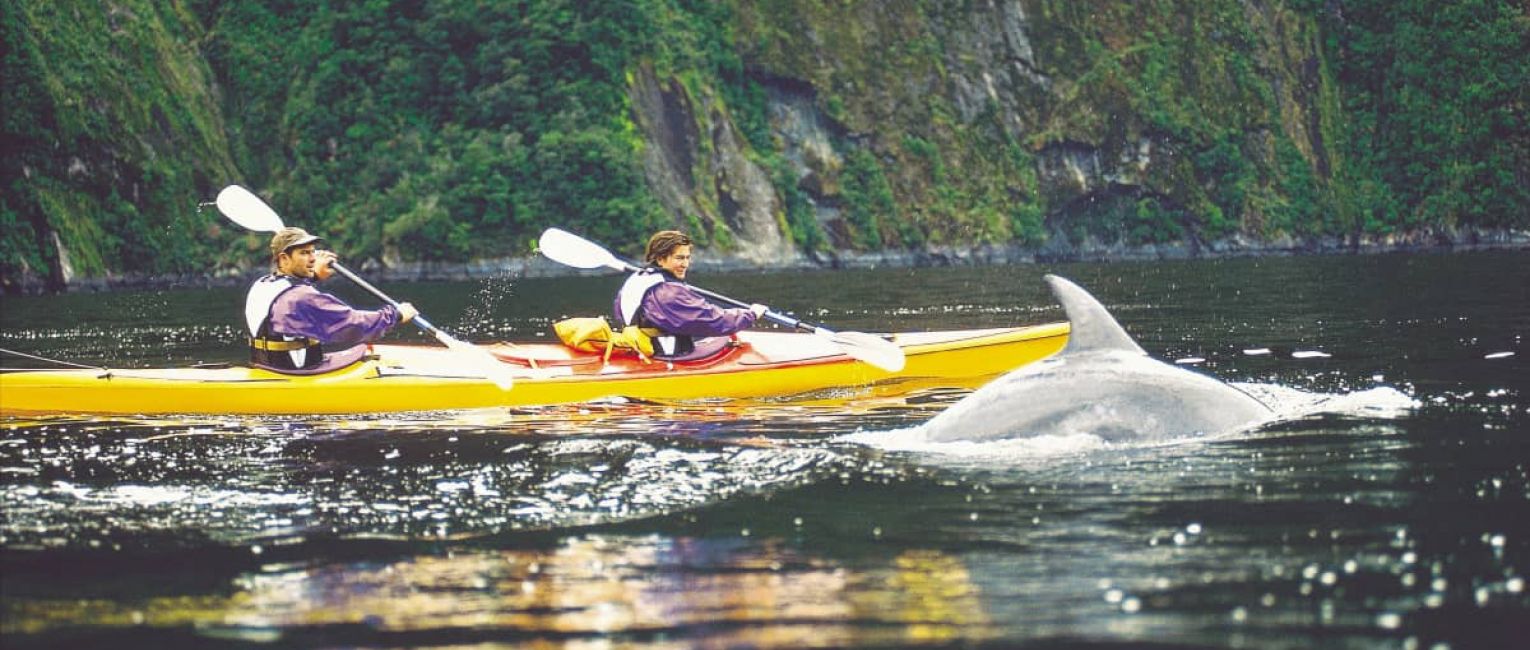
Kayaking 101: A Crash Course for Kayak Beginners
Kayaking is a great way to experience the beauty and tranquility of the great outdoors. It is a fun and relaxing way to get around and explore new destinations, and it's also a great way to travel long distances and explore far-flung places. The great thing about kayaking is that it is a low-impact way to enjoy nature, and it can be done by anyone, regardless of their skill level.
To help encourage people to get out and enjoy this fantastic sport, we’ve put together some tips and advice for beginners.
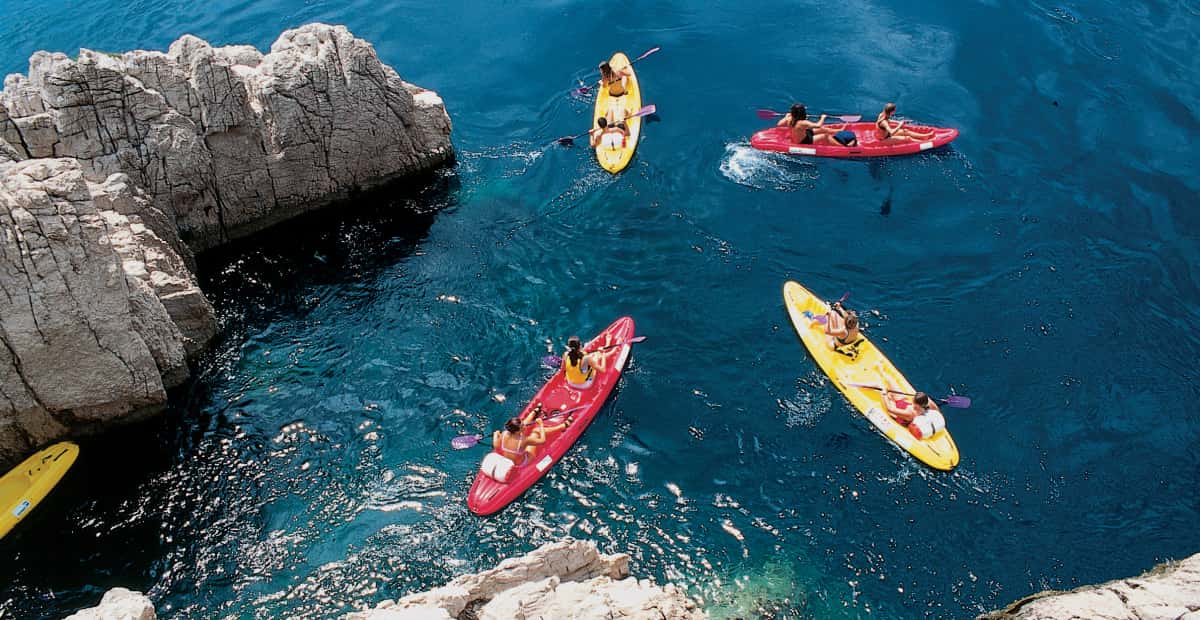
Kayaking 101: A Crash Course for Kayak Beginners.
Master The Essential Skills First
Kayaking is one of the most accessible and popular outdoor activities in the world. But it can also be one of the most intimidating. While it’s relatively easy to learn, mastering the skills can take years. In order to make sure you’re always paddling in the right direction, it’s important to learn the basics first.
1. Learn How To Get In & Out Of A Kayak:
We know, it sounds a bit patronising. But many of us have been there, and many more will go there to, that first time where you jump into a Kayak followed by a wobble, a splash, and a change of plans. Aren’t you glad you had your life jacket on. As you pull yourself back out of the water you realise there may be some practice involved.
-
The most important part of getting in and out of your Kayak is: Don’t even start without the right safety gear. We will get more into what you need later.
-
When picking a launch spot and an exit spot, try to find some shallow water that is preferably no more than hip deep. And maybe get a buddy or instructor to help you stay sturdy your first few times.
Sure, some people get it right the first time, and some people get it right every time, but most people will take a few swims to get it down so it’s worth taking a bit of time to practice your entry and exit so you can get on to more important things.
Safety Gear
Kayaking safety is something you should take very seriously. Like most water sports, you should always wear a PDF (personal floatation device). Use a paddle leash to keep your paddle from floating away. In addition, keep a safety kit in your storage space on every ride. Include the following:
- Flashlight
- Duct Tape
- Bandages
- Dry Food
- Whistle
Also, remember your sunscreen. The sun’s impact is drastically increased by the reflections in the water around the kayak.
Setting Up
Now that you’re secured and ready for a safe trip, it’s time to set up and pack your kayak. It's much easier to do this on dry land instead of shallow waters.
- Adjust your back brace so that you are comfortable but still supported.
- Sit into the kayak and adjust your footpegs, so your knees are slightly bent. This is used mostly for leverage and momentum with your paddling techniques later on.
- If you have any gear to bring pack it away in the empty spaces but avoid putting anything under your feet on the pegs.
- Also, a lot of people find stretching out their arms and shoulders helpful before jumping in and setting off.
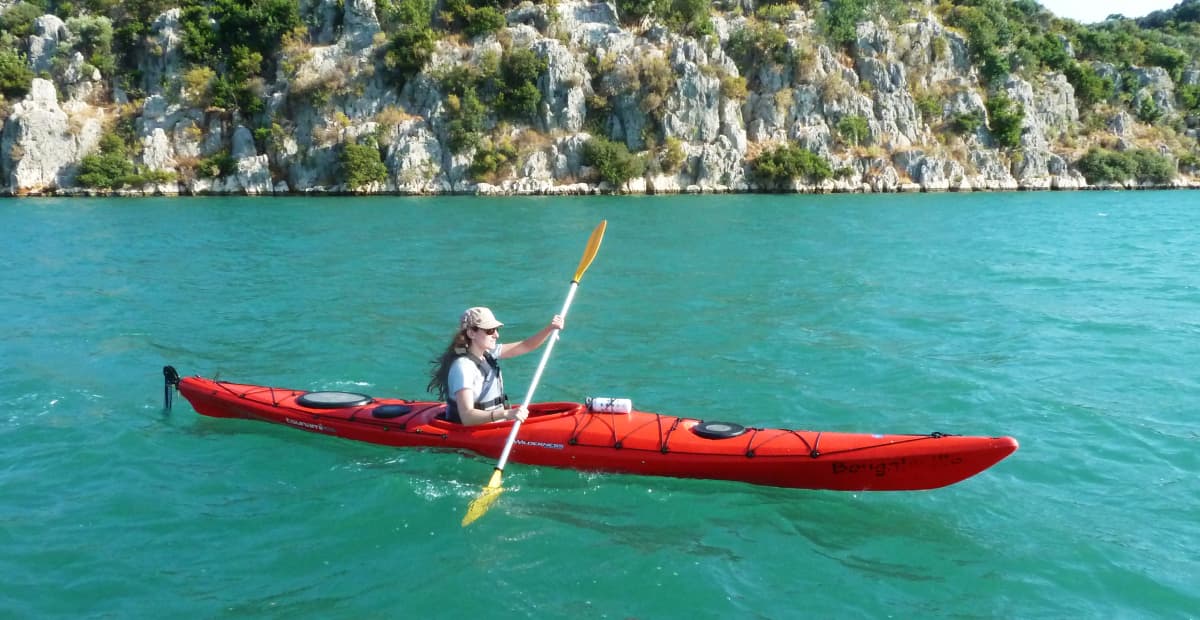
2. Learn Basic Kayak Paddling Techniques:
Now that you’re in, and are certain you can get back out without a hitch, you can move on to the fun part. Practicing your paddling technique will take a bit of time but it won’t be long until your paddling like a pro. Just get the foundations down first and the rest will come in time and experience.
Once you are out on the water it is pretty intuitive to pick it up and get comfortable, but developing your technique and taking advantage of your paddle will make you a lot more efficient and effective.
-
Pick the right paddle – This is essentially your motor and not all paddles will be the same. Some will be made with different materials and others will be different in blade shape. If you are renting it’s not something you need to worry too much about. If you are buying a Kayak, then absolutely do not pick the first paddle you see. Take a little bit of time to learn the differences in materials and shape as a good paddle will make all the difference.
-
When holding the paddle there are 2 important things to remember. The back of the paddle is convex, and the front of the paddle (Power Side) is concave. This will help you not only to move faster but will help you not look like a total beginner holding the paddle backwards! (We’ve all been there)
-
Getting your technique down is not just about how fast you get around. A good technique will keep you out in the water longer with less tiredness, and most importantly save you from an injury.
Getting The Technique Just Right
Getting your technique right will make all the difference between a fun day out or a frustrating (and painful) experience. By paddling and using the kayak efficiently with good technique, you will move faster, use the right muscles to avoid an injury or a painful afternoon, and let you take in the sights and surroundings at your own pace.
The idea of kayaking is to keep low to the water's surface, and to paddle with a controlled, continuous stroke. This allows you to make long, sweeping strokes that provide a smooth, relaxed ride.
-
The right technique is about maintaining balance and giving yourself enough leverage. By using your torso and legs (remember your foot pegs) you can generate force without letting your arms do all the work. This will keep you out on the water for longer especially as a beginner as you will feel more relaxed and your arms won't be sore after your first hour.
-
To make turns, paddle to the side opposite to the direction you wish to go and let the kayak turn without losing balance. Once you are happy with your direction, repeat step 1 and continue your momentum as before.
-
When pulling back on the paddle, try to maintain a straight line of movement. If you find yourself trying to change your trajectory during motion, or making unnecessary movements that don’t build upon your momentum, you’re wasting energy, and are likely to topple over and end up swimming rather than kayaking. Try to eliminate unnecessary movements so when moving forward through the water, your paddle should remain stationary. Always remember, kayaking is mostly a relaxing time on the water unless you are hitting those rapids (Not as a beginner!) So if you are feeling tired or getting pains you should focus more on your technique than moving fast.
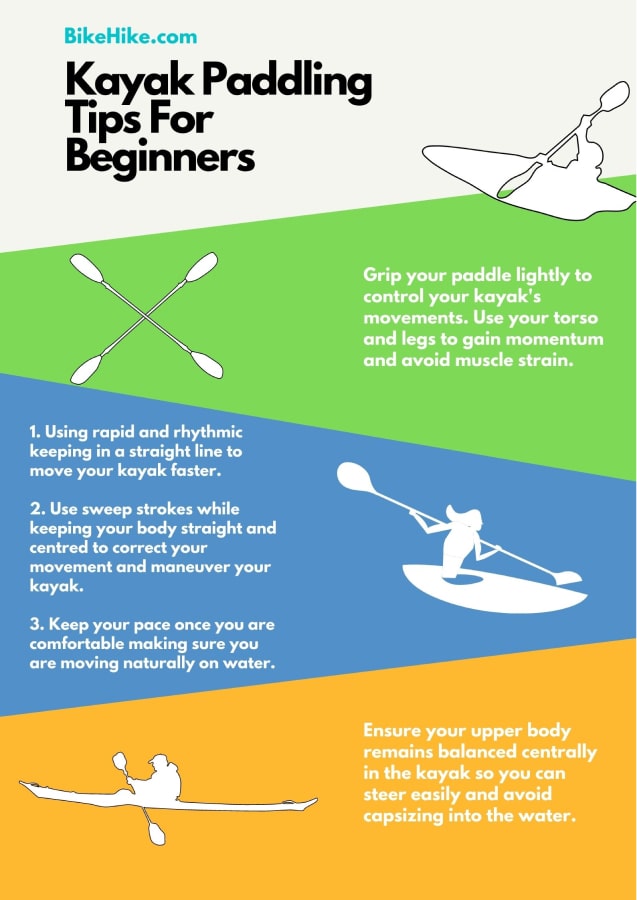
3. Learn River Hand Signals
The flowing water and crashing of a river can be quite loud. And you don’t realise just how loud until you are in the middle of it and getting a sore throat from shouting. To save yourself the hassle of shouting at everyone all the time, there are a few hand signals you can learn to communicate while out on the river. Also well worth knowing in case there are some experienced guys who also don’t like shouting out on the river with you.
Here, you can find some of the common hand signals so you can get used to what you need before hitting the river.
4. Learn Rescue Techniques
What To Do If Your Kayak Capsizes
There’s one part of being out on the water that no one particularly enjoys, and that’s being in the water when your not planning a swim.
There are many factors that can cause a kayak to flip over, from strong currents, rocks, and even excessive weight from too much gear or an unexpected weight shift, it is very easy to topple over especially starting out.
The first thing to always do is to remain calm. Your personal flotation device will keep you steady giving you time to assess what is happening.
Find your way back to your kayak and either climb and sit on top, or grab the side and attempt to flip it back towards you so you can enter.
When you are first getting in and out of your kayak (Step 1) you should also find time to practice re-entry in shallow waters. Generally an instructor will do this with you by flipping your kayak and instructing you how to remain calm and get back in as quickly as possible. To get an idea of what to do in these situations here is a quick video on what to do when your kayak capsizes.
How Not To Knot
If you’re going to be on the water for any length of time, you’ll eventually need to know how to tie some knots.
If you own a Kayak you will need to learn knots when transporting, you will need to tie your Kayak up at shore, and most importantly a part of river rescue is being able to tie the right knots on a rope to throw to someone who may be struggling.
There is always a risk with watersports, and especially for beginners an important skill to learn is how to quickly throw a rope to help someone in the water.
This video gives a great tutorial for any looking to learn how to quickly coil a throw rope, a vital skill to know for anyone taking to white water rapids or joining a kayak group.
For other important knots to learn when starting out, here is a list of 5 knots any kayaker should know, to help with transporting, docking, and even securing your gear when out on the water.
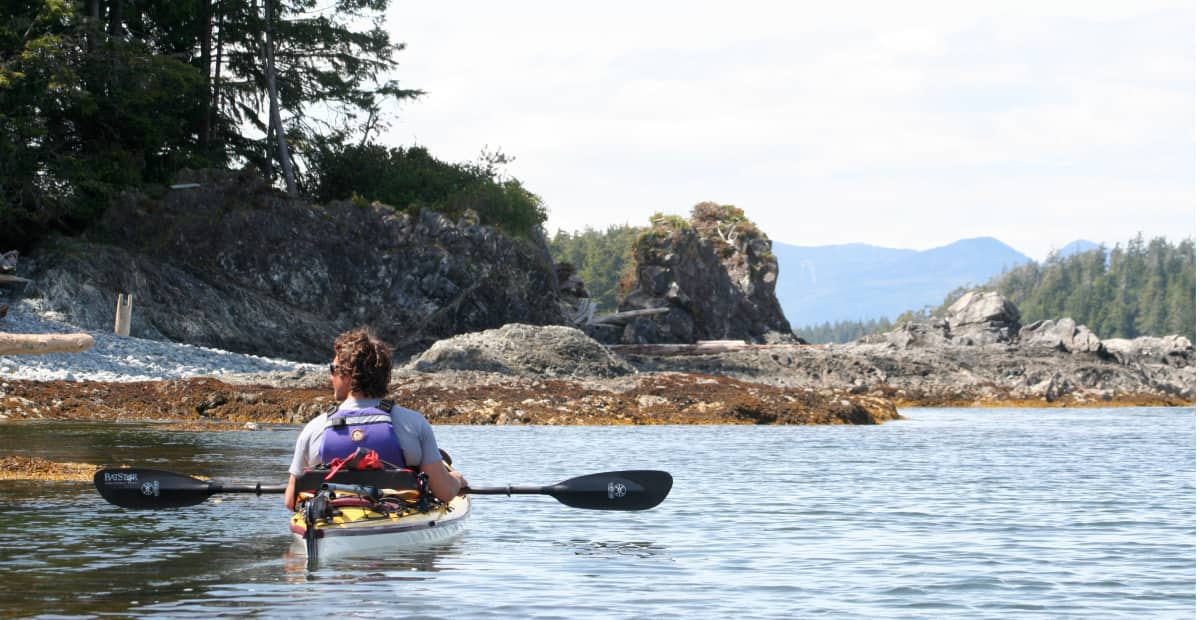
5. Join A Kayak Club:
You don’t need to be on an adventure tour to enjoy the thrills of kayaking. If there is water nearby then chances are there is a kayak club as well.
Joining a club has many benefits such as:
Safety:
Being part of a community means you won’t have to kayak alone. Being out in the water alone can be very dangerous especially if there is a particular skillset that you aren't comfortable with yet. The danger of being caught out in the open sea without anyone else around to help you is very real, as even seasoned professionals can sometimes end up lost at sea through their own negligence! Especially without planning ahead, you may not know the obstacles, whereas a seasoned kayak club will know every local route and be able to offer you advice on tackling every section with ease.
Community:
It’s more fun to do something you enjoy with like-minded people. Joining a club is almost like joining your own community. It's a great way to meet new people, build friendships and improve your skills. It can also help you understand more about why you kayak in the first place and is a great way to open up to more experiences!
Learning Experiences:
Kayaking with a group can be one of the best ways to learn new techniques and skills, because it is safe to try some new things with experienced people around you. Sometimes, groups in a club will require people who are looking to participate in a day out to have a certain level of experience already. Working with groups like this on new techniques can be an incredible learning opportunity as you are able to expand your abilities and knowledge which also promotes further growth and experience!
Motivation:
Similar to learning and evolving, needing to have techniques to participate in different events can be a motivating factor to go out there and test yourself. It will also motivate you to ask experienced people for help whenever you are questioning your abilities.
Exploration:
A lot of guides and groups have different knowledge about different spots which can turn into some amazing new adventures for you. You may even learn new spots at places you have been hiking or cycling for years as heading downriver can open up a whole new world of accessibility for you.
You will come away from the experience as a more experienced and knowledgeable kayaker!
We hope our guide to kayaking will help you get started and out on the river right away. If you are looking for adventure travel that includes kayaking for exploration and fun, be sure to check out our multisport adventure trips to find a destination that is right for you.
Happy Travels,
Trish Sare.
About The Author
 Trish Sare is the owner of BikeHike and a passionate outdoor enthusiast with over 30 years of experience as a world traveler. She's lived, traveled, and guided extensively in North, South and Central America, Europe, Oceania, Africa, and Asia. She has guided and helped to develop every one of our multi-sport holidays. In her spare time, Trish is usually outdoors either mountain biking, hiking, sea kayaking, trail running, or climbing. Trish has a passion for the world and all of the amazing cultures that inhabit it and does her best to immerse herself directly into their distinctive lifestyles.
Trish Sare is the owner of BikeHike and a passionate outdoor enthusiast with over 30 years of experience as a world traveler. She's lived, traveled, and guided extensively in North, South and Central America, Europe, Oceania, Africa, and Asia. She has guided and helped to develop every one of our multi-sport holidays. In her spare time, Trish is usually outdoors either mountain biking, hiking, sea kayaking, trail running, or climbing. Trish has a passion for the world and all of the amazing cultures that inhabit it and does her best to immerse herself directly into their distinctive lifestyles.